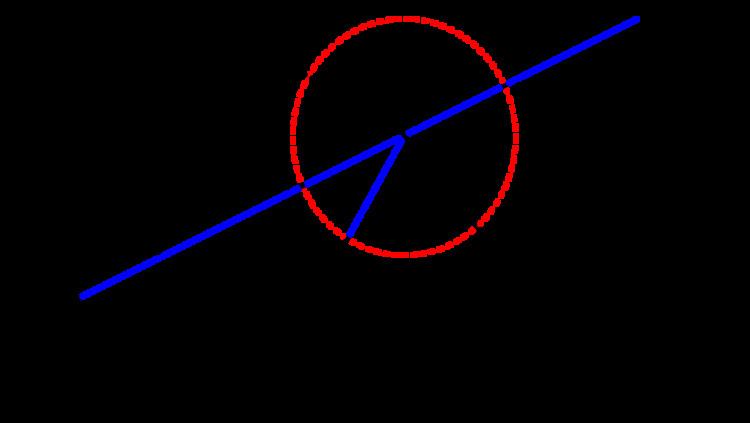 | ||
In geometry, a strophoid is a curve generated from a given curve C and points A (the fixed point) and O (the pole) as follows: Let L be a variable line passing through O and intersecting C at K. Now let P1 and P2 be the two points on L whose distance from K is the same as the distance from A to K. The locus of such points P1 and P2 is then the strophoid of C with respect to the pole O and fixed point A. Note that AP1 and AP2 are at right angles in this construction.
Contents
- Polar coordinates
- Cartesian coordinates
- An alternative polar formula
- Oblique strophoids
- The right strophoid
- Circles
- References
In the special case where C is a line, A lies on C, and O is not on C, then the curve is called an oblique strophoid. If, in addition, OA is perpendicular to C then the curve is called a right strophoid, or simply strophoid by some authors. The right strophoid is also called the logocyclic curve or foliate.
Polar coordinates
Let the curve C be given by
The points on the line OK have polar angle
Cartesian coordinates
Let C be given parametrically by (x(t), y(t)). Let A be the point (a, b) and let O be the point (p, q). Then, by a straightforward application of the polar formula, the strophoid is given parametrically by:
where
An alternative polar formula
The complex nature of the formulas given above limits their usefulness in specific cases. There is an alternative form which is sometimes simpler to apply. This is particularly useful when C is a sectrix of Maclaurin with poles O and A.
Let O be the origin and A be the point (a, 0). Let K be a point on the curve,
Let P1 and P2 be the points on OK that are distance AK from K, numbering so that
By a similar argument, or simply using the fact that AP1 and AP2 are at right angles, the angle between AP2 and the x-axis is then
The polar equation for the strophoid can now be derived from l1 and l2 from the formula above:
C is a sectrix of Maclaurin with poles O and A when l is of the form
Oblique strophoids
Let C be a line through A. Then, in the notation used above,
and
It's easy to check that these equations describe the same curve.
Moving the origin to A (again, see Sectrix of Maclaurin) and replacing −a with a produces
and rotating by
In rectangular coordinates, with a change of constant parameters, this is
This is a cubic curve and, by the expression in polar coordinates it is rational. It has a crunode at (0, 0) and the line y=b is an asymptote.
The right strophoid
Putting
gives
This is called the right strophoid and corresponds to the case where C is the y-axis, A is the origin, and O is the point (a,0).
The Cartesian equation is
The curve resembles the Folium of Descartes and the line x = −a is an asymptote to two branches. The curve has two more asymptotes, in the plane with complex coordinates, given by
Circles
Let C be a circle through O and A, where O is the origin and A is the point (a, 0). Then, in the notation used above,
and
These are the equations of the two circles which also pass through O and A and form angles of
